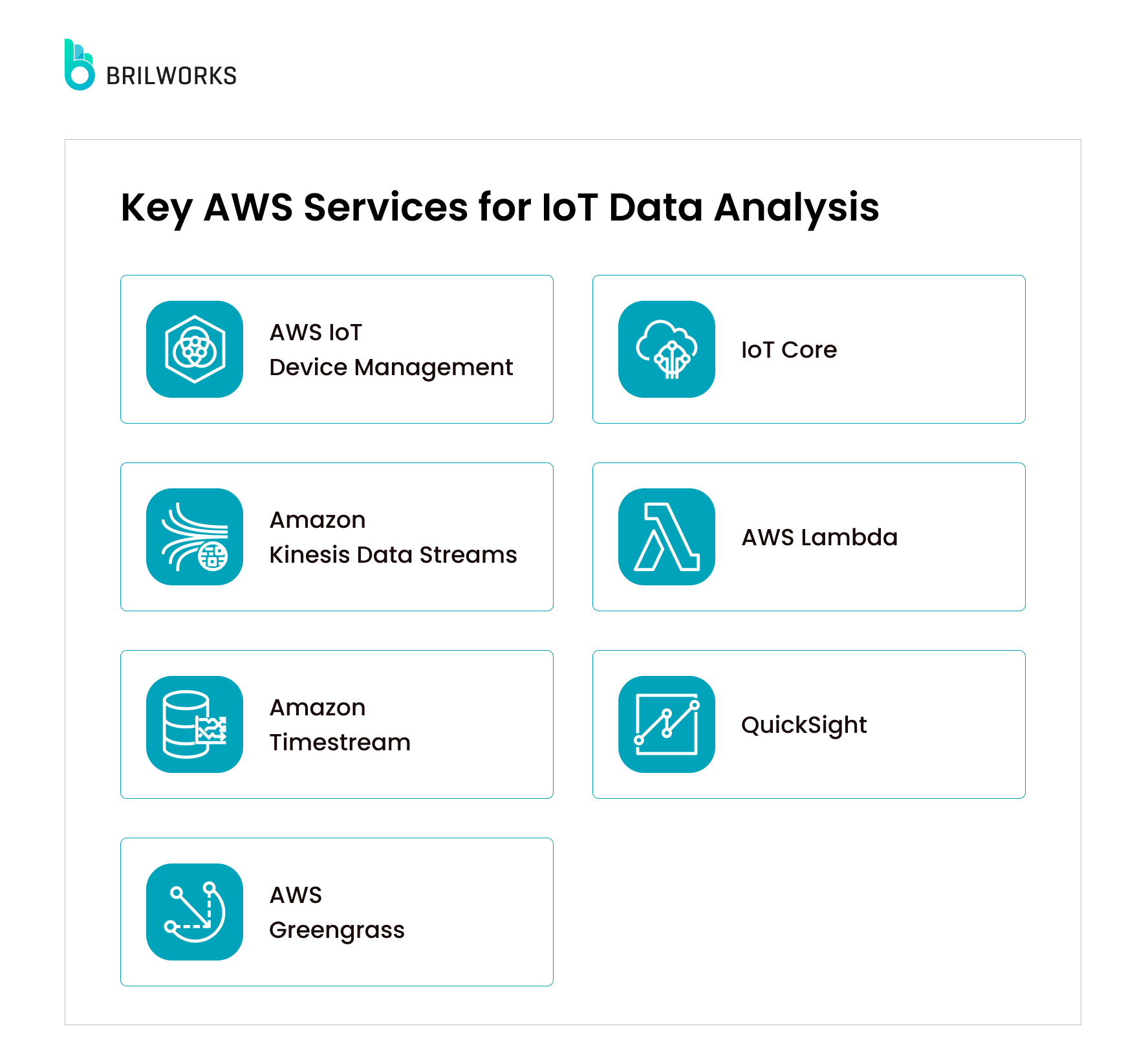COOPERATION MODEL
ARTIFICIAL INTELLIGENCE
PRODUCT ENGINEERING
DevOps & Cloud
LOW-CODE/NO-CODE DEVELOPMENT
INDUSTRY
FRONTEND DEVELOPMENT
CLOUD DEVELOPMENT
MOBILE APP DEVELOPMENT
LOW CODE/ NO CODE DEVELOPMENT
EMERGING TECHNOLOGIES








The Internet of Things (IoT) connects smart devices to a network that collects data from millions of sources. One of the most exciting advancements in this field is real-time data processing, which enables immediate tracking of transportation and logistics.
Consider a manufacturing facility equipped with sensors that monitor variables such as temperature, pressure, and vibration. With real-time data analysis, you can quickly identify anomalies, such as an unexpected spike in temperature or vibration, allowing for swift corrective action.
This capability can be a game-changer for modern businesses, but it also presents significant challenges. Managing and analyzing the vast amounts of data generated by thousands of sensors within an IoT network can be complex and resource-intensive.
Fortunately, cloud services offer an effective solution to these challenges. Among them, amazon web service stands out as a leading provider for IoT development. It offers a weatlh of tools designed to help you manage your IoT infrastructure efficiently.
In this article, we will explore how to enhance real-time IoT data processing using AWS services. Additionally, we’ll provide guidance on building a robust cloud-powered infrastructure to leverage these resources effectively.
When we talk about the IoT, most people envision an interconnected network.
With IoT, information can be interpreted and evaluated at a much faster speed, which helps in operations and strategic decision-making.
Real-time insights can be applied in various areas and use cases. However, to gain these insights, you need an efficient and robust infrastructure.
But having just a powerful infrastructure isn't enough. You also need a system that can orchestrate different real-time analyses. To handle this high throughput and for data visualization, you can enhance this service by using machine learning services.
In the upcoming sections, we'll explore how you can simplify this complex process using AWS services.

AWS IoT Device Management lets you register, monitor, and organize any number of devices at scale. It's easy to integrate with AWS IoT Core, another AWS service, and you can also audit and monitor your fleet using AWS IoT Device Defender.
Additionally, you can update your fleet's software and firmware. Metadata indexing is an option that allows you to track device states and optimize your AWS IoT services.
This service makes IoT management much easier. You can develop a cloud-based end-to-end solution that streamlines your operations by integrating it with other services.
AWS's most popular offering, Amazon IoT Core, is used in the industry to monitor and manage IoT operations. Major companies like Volkswagen Group and Carrier utilize this service. It's a fully managed service. AWS offers it as a control service, allowing you to route messages from millions, billions, or even trillions of devices.
Its key features include a message broker and the ability to mirror device states. You can also connect LoRaWAN devices and gateways to it. Additionally, it can be integrated with Amazon Sidewalk, a service designed to provide long-range connectivity for low-power devices. As a result, IoT devices can communicate over greater distances, which is especially useful in urban settings.
It includes a message broker feature to transmit messages from all your IoT devices and applications securely. Subsequently, you can securely monitor devices such as autonomous vehicles, shared vehicles, and electric vehicles.
This service is useful when you have to analyze and process data from the continuous data stream in real-time. This is a serverless service, so you need to setup an infrastructure to run it. In simple terms, with this service, you can handle a constant flow of data—like videos, website clicks, or sensor readings.
It is widely used to ingest real-time data such as videos, audio, application logs, and website clickstreams for machine learning, analytics, and other applications. It can used in smart devices at home and for public security to stream data. It is also used to build real-time applications like application monitoring and fraud detection.
AWS Lambda is a popular and versatile service that runs your code in response to events. You can set it up to respond to various triggers, like data arriving from IoT devices. Once the data hits Lambda, you can easily manipulate it. For example, you can link it with DynamoDB and save that processed data for future use. It would be beneficial if you want to store your data securely and access it later for further analysis or reporting.
Both services scale automatically, so you don't have to worry about handling fluctuations in data volume. Overall, AWS Lambda streamlines the process of working with IoT data, making it an essential part of your cloud architecture.
AWS has a service called Timestream, which, as the name suggests, is specifically designed to handle time series data efficiently.
With Timestream, you can quickly query your time series data, which is super important for real-time analysis. For instance, if you're monitoring temperature readings from different sensors, Timestream can provide the latest data fast, helping you spot any unusual patterns.
It also comes with some advanced analytics features, which are perfect for IoT applications like smart grid management, where you might encounter unexpected spikes in energy usage.
Plus, you can easily integrate Timestream with other AWS services to make everything run even smoother.
Amazon QuickSight is a business intelligence service used to develop unified business intelligence in data-driven organizations. With this service, you can easily access and analyze information on a single platform.
You can also create interactive dashboards, detailed reports, and ask questions in plain language. We discussed Amazon Q in an article earlier; it's AWS's latest generative AI-powered solution. By integrating it, you can gain important insights just by asking questions.
QuickSight makes it really easy to visualize your data, helping you spot trends and make decisions faster. Plus, it's designed to scale seamlessly, so whether you're a small startup or a large enterprise, it can handle your needs. You can also share your findings with teammates effortlessly, fostering collaboration across your organization. Overall, it's a powerful tool for anyone looking to harness the full potential of their data.
If you want to tap into some of the most sought-after AI technology recently, AWS offers various pre-trained models that you can use without needing extensive data science expertise. These models are designed for common use cases like image recognition and predictive maintenance.
Plus, AWS provides all the tools you need for custom model training so you can tailor the AI to fit your specific needs. Their machine learning services integrate seamlessly with IoT data streams, which means you can easily process data from your IoT devices using AI technology.
This opens up a world of possibilities for real-time analysis and decision-making. Whether you're monitoring equipment health or analyzing images, you can leverage AI to get valuable insights quickly. It's a great way to boost efficiency and innovation in your projects.
AWS Greengrass brings computing power closer to your IoT devices, allowing for local edge computing. With Greengrass, you can process data right at the edge. It enhances efficiency by minimizing the need to send everything to the cloud.
Additionally, it improves data privacy by keeping sensitive information local instead of transmitting it over the internet. You can run AWS Lambda functions on your devices. It is crucial for applications like real-time monitoring and automated responses.
Greengrass also supports machine learning. This means you can deploy models directly to edge devices.
I'd explain the typical IoT data analysis architecture on AWS to a business audience in a conversational manner:
Let's start with the devices themselves. These are your IoT sensors that collect various types of data, like temperature, humidity, and other readings. They are the heartbeat of your system, generating crucial information in real time. Next, we can use AWS IoT Core. Think of it as the central hub that ingests and securely routes all the incoming data from these devices. It ensures that your data is organized and ready for processing.
Once the data is routed through IoT Core, it heads to Kinesis Data Streams. This service is essential for real-time data processing. It allows you to handle large volumes of streaming data seamlessly, ensuring that you can react quickly to any changes in the environment or operational conditions.
Now, let's talk about how we process that data. This is where AWS Lambda comes in. It allows you to set up functions that are automatically triggered by the incoming data. For example, if a temperature reading exceeds a specific limit, a Lambda function can analyze that data and take immediate action, like sending alerts or updating dashboards.
After processing, we need a place to store this information efficiently. That's where Amazon Timestream comes into play. It's a time-series database specifically designed for storing time-stamped data. This means you can easily analyze trends over time, which is crucial for making informed business decisions.
Next, we need to make sense of all this data. Enter Amazon QuickSight. This tool lets you create visual dashboards that provide insights at a glance. It transforms raw data into understandable visuals, helping stakeholders quickly grasp trends and anomalies. Finally, we can enhance our analysis with Machine Learning Services. By applying ML models, you can perform predictive analytics, enabling you to forecast trends and identify potential issues before they escalate.
This architecture provides a robust framework for managing your IoT data. By leveraging these AWS services, you can ensure efficient data ingestion, real-time processing, effective storage, and insightful visualization. This setup will help you make data-driven decisions, enhancing operational efficiency and driving growth.
Real-time data analysis is a game-changer for the IoT industry. By connecting smart devices and analyzing the data they generate, businesses can make quicker and more informed decisions. With AWS's suite of services—like IoT Core, Kinesis, Lambda, Timestream, QuickSight, and other AWS development services — you have everything you need to build a powerful, scalable data infrastructure.These tools not only help you process and visualize data effectively but also enable you to harness machine learning for deeper insights. As a result, you can stay ahead of anomalies, optimize operations, and ultimately drive growth.
Embracing these technologies will empower your organization to leverage IoT data in ways that transform your business. So, whether you're in manufacturing, logistics, or any other sector, investing in real-time data analytics and AWS development services can truly set you apart.
AWS IoT Core is a fully managed cloud service that allows you to connect IoT devices to the AWS cloud securely. It facilitates the collection, processing, and analysis of data from millions of devices, enabling real-time insights and actions.
Amazon Kinesis is a serverless streaming data service that lets you collect, process, and analyze real-time data streams. It can handle large volumes of data, such as video feeds or sensor readings, making it ideal for applications like monitoring and analytics.
AWS Lambda runs your code in response to events, such as data arriving from IoT devices. It allows you to automate tasks like data processing and triggering alerts without managing servers, making it a versatile tool in your IoT architecture.
Amazon QuickSight is a business intelligence service that enables you to create interactive dashboards and visualizations from your IoT data. It helps you quickly analyze trends and make data-driven decisions by transforming raw data into understandable visuals.
AWS development services provide the necessary tools and frameworks to build, deploy, and manage IoT applications effectively. These services streamline processes like data ingestion, real-time processing, and analytics, enabling developers to create scalable and efficient IoT solutions.
Get In Touch
Contact us for your software development requirements
Get In Touch
Contact us for your software development requirements